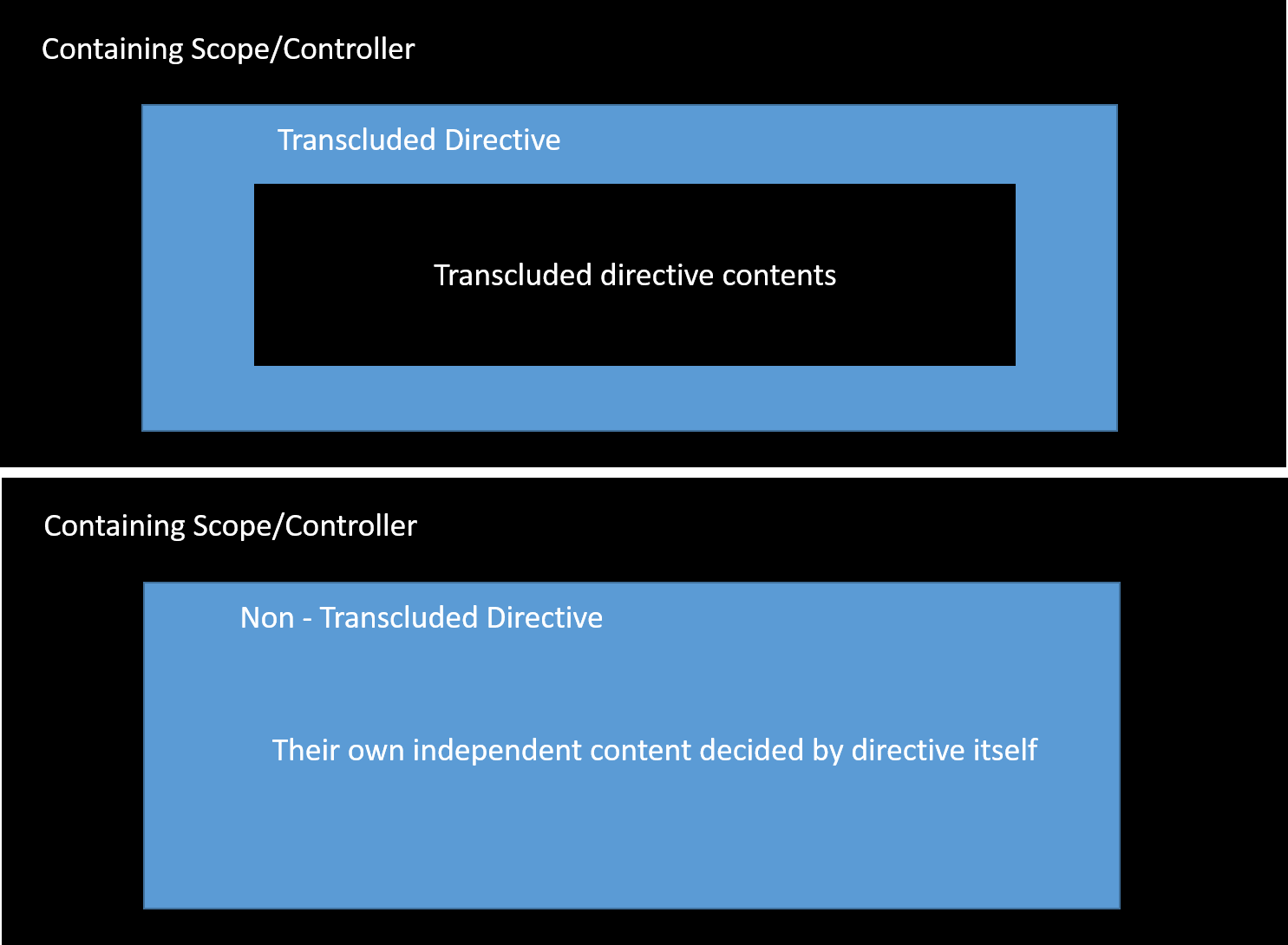When should I use transclude: 'true' and when transclude: 'element' ?
I cant find anything about transclude: 'element' in the angular docs, they are pretty confusing.
I would be happy if someone could explain this in simple language. What is the benefit of each option? What is the real difference between them?
This is what I have found :
transclude: trueInside a compile function, you can manipulate the DOM with the help of transclude linking function or you can insert the transcluded DOM into the template using ngTransclude directive on any HTML tag.
and
transclude: ‘element’This transcludes the entire element and a transclude linking function is introduced in the compile function. You can not have access to scope here because the scope is not yet created. Compile function creates a link function for the directive which has access to scope and transcludeFn lets you touch the cloned element (which was transcluded) for DOM manipulation or make use of data bound to scope in it. For your information, this is used in ng-repeat and ng-switch.


made available to the directivestatement. The element is always available to the directive. can you please elaborate on this? – Photojournalism